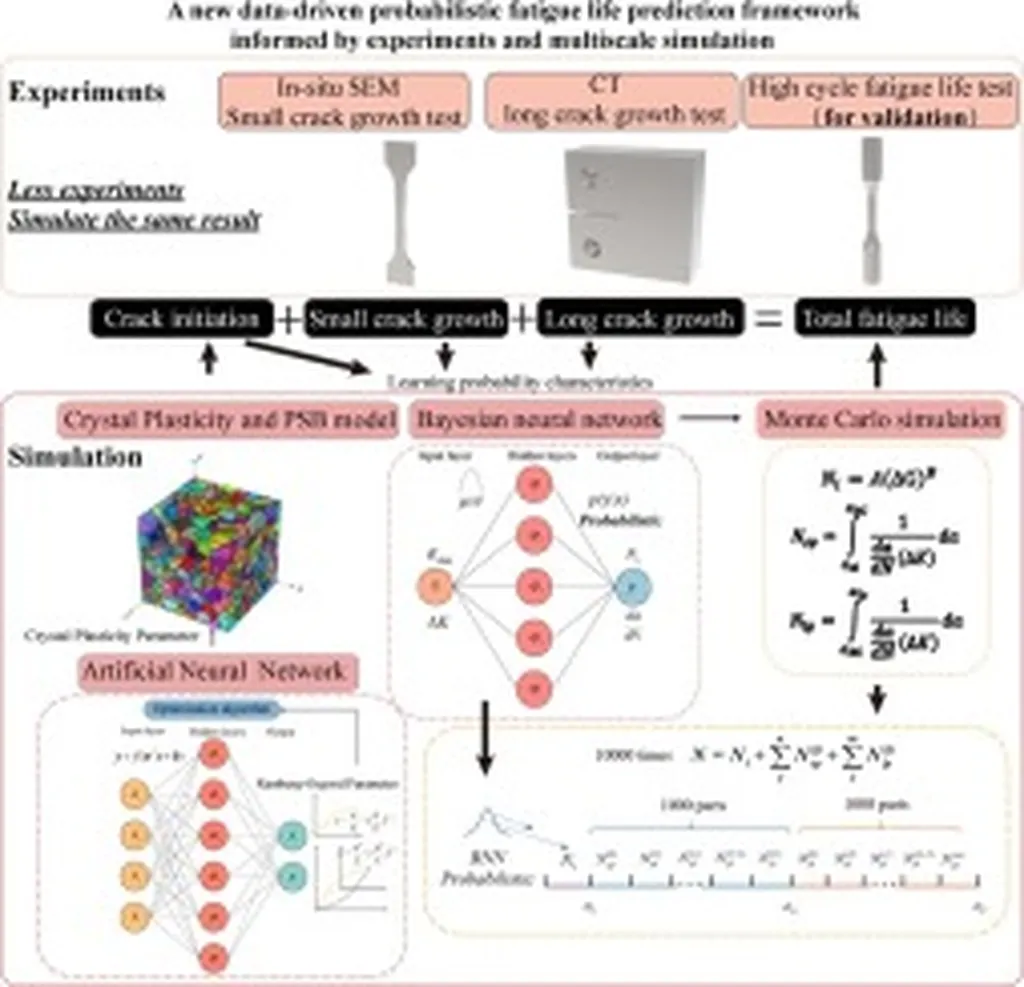In a groundbreaking development poised to reshape the energy sector, researchers have introduced a novel approach to evaluating the fatigue life of welded joints, a critical component in numerous industrial applications. The study, led by Wei Wei from the School of Materials Science and Engineering at Liaoning University of Technology in China, presents a new model that could significantly enhance the accuracy of predicting the lifespan of welded structures, particularly those subjected to cyclic loading.
The research, published in *Hanjie xuebao* (translated to *Journal of Mechanical Engineering*), focuses on the S-N curve, a fundamental tool used to describe the relationship between stress (S) and the number of cycles to failure (N). Traditional S-N curve models often overlook the unique characteristics of welded joints, leading to potential inaccuracies in fatigue life predictions. Wei Wei’s team addressed this gap by incorporating the principles of thermodynamic entropy, a measure of disorder or randomness in a system, to develop a more robust evaluation model.
“We realized that the S-N curve for welded joints is fundamentally different from that of base materials,” Wei Wei explained. “By considering the entropy and incorporating key parameters like tensile strength and fatigue limit, we can achieve a more precise prediction of the fatigue life of welded joints.”
The new model assumes that the S-N curve consists of two horizontal asymptote components, reflecting the distinct behaviors of welded joints under cyclic loading. This approach was validated using experimental data from various welded joints, including aluminum steel dissimilar welded joints, S355J2N welded joints, and Ti6Al4V welded joints. The results demonstrated that the slope of the inclined section of the S-N curve remains nearly constant for certain materials, while the fatigue strength varies depending on the presence of weld reinforcement.
For the energy sector, where welded structures are ubiquitous in pipelines, pressure vessels, and offshore platforms, this research holds significant commercial implications. Accurate prediction of fatigue life is crucial for ensuring the safety and reliability of these structures, as well as for optimizing maintenance schedules and reducing downtime. By adopting the new model, energy companies can make more informed decisions about the design and maintenance of their assets, ultimately leading to cost savings and improved operational efficiency.
“We believe that this model will not only enhance the accuracy of fatigue life predictions but also provide deeper insights into the physical behavior of welded joints,” Wei Wei added. “This could pave the way for more innovative and efficient design practices in the energy sector and beyond.”
The study’s findings also highlight the importance of considering the unique characteristics of welded joints in fatigue analysis. By incorporating parameters like tensile strength and fatigue limit, the new model offers a more comprehensive understanding of the fatigue behavior of welded structures. This could lead to the development of more advanced materials and welding techniques, further improving the performance and reliability of welded joints in various industrial applications.
As the energy sector continues to evolve, the demand for accurate and reliable fatigue life predictions will only grow. Wei Wei’s research provides a promising solution to this challenge, offering a more precise and physically relevant approach to evaluating the fatigue life of welded joints. With further validation and refinement, this model could become a standard tool in the industry, shaping the future of welded joint design and maintenance.

